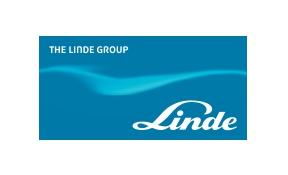A session held at the 20th International Compressor Conference at Purdue University earlier this summer, discussed ‘Alternative Refrigerant Compressors’, such as propane and isobutene compressors.

From 12-15 July 2010, the Purdue University in West Lafayette, Indiana (US) hosted the 20th International Compressor Engineering Conference. Organised by the School of Mechanical Engineering, the conference included many sessions on specific compressor technologies, such as reciprocating, rolling piston, scroll, screw, centrifugal, linear and novel compressors, and issues related to compressor design and reliability, such as noise control, vibrations, gas pulsations, lubrication, wear, valves. In addition, there were several sessions that focused on new and existing applications of compressor technologies.
An afternoon session on 13 July 2010 was dedicated to ‘Alternative Refrigerant Compressors’, including hydrocarbon technology.
Experimental Performance of a Semi-Hermetic Reciprocating Compressor working with Propane, University of Padova, Dipartimento di Fisica Tecnica, Italy
The presentation discussed the global, isentropic and volumetric efficiency of a semi-hermetic reciprocating propane compressor that is integrated in a 100 kW capacity propane heat pump intended for ground coupled operation that has been designed and installed at the University of Padova. The researchers performed tests both with and without an internal heat exchanger (IHX) between suction vapour and liquid line, and at different settings of the expansion valve, in order to analyse the influence of suction superheat on the compressor efficiency.
The suction vapour superheating was experimentally shown to improve volumetric efficiency and, therefore, global compression efficiency. Data with IHX displayed higher efficiency than data without IHX, while among data without IHX, in general, data series at higher superheating displayed higher efficiency. At full compressor capacity, when using the IHX, the global efficiency varied from around 0.69 up to 0.71, while without IHX the maximum efficiency was around 0.67 and experimental values as low as 0.62 have been measured. Regarding the volumetric efficiency, this varied from around 0.82 up to 0.89 with IHX, while experimental values as low as 0.73 have been measured without IHX.
An explanation of the experimental behaviour can be found in the high solubility of propane on the naphthenic mineral oil used as the lubricant. A different reason for the effect of superheating regards the possible condensation on a cold spot inside the cylinder during the compression stroke. The researchers propose a simple qualitative estimation of this phenomenon, showing that such phenomenon is expected to be much more relevant with propane in comparison to R22 and that the suction superheat would have a positive influence on the volumetric efficiency.
Comparative Study of Two Different Equations of State for Modelling a Reciprocating Compressor for the Refrigerant R600a, TU-Graz, Austria
With most simulation methods assuming the refrigerant as Ideal Gas, researchers from the Graz University of Technology simulated an isobutene hermetic reciprocating compressor and compared the ideal gas assumption on the one hand and a real gas approach on the other through comparing pressure volume (p-V) diagrams. One of their findings indicates that adequate boundary conditions for the walls of the cylinder and the suction and discharge line are much more important than the use of an improved gas model.
An afternoon session on 13 July 2010 was dedicated to ‘Alternative Refrigerant Compressors’, including hydrocarbon technology.
Experimental Performance of a Semi-Hermetic Reciprocating Compressor working with Propane, University of Padova, Dipartimento di Fisica Tecnica, Italy
The presentation discussed the global, isentropic and volumetric efficiency of a semi-hermetic reciprocating propane compressor that is integrated in a 100 kW capacity propane heat pump intended for ground coupled operation that has been designed and installed at the University of Padova. The researchers performed tests both with and without an internal heat exchanger (IHX) between suction vapour and liquid line, and at different settings of the expansion valve, in order to analyse the influence of suction superheat on the compressor efficiency.
The suction vapour superheating was experimentally shown to improve volumetric efficiency and, therefore, global compression efficiency. Data with IHX displayed higher efficiency than data without IHX, while among data without IHX, in general, data series at higher superheating displayed higher efficiency. At full compressor capacity, when using the IHX, the global efficiency varied from around 0.69 up to 0.71, while without IHX the maximum efficiency was around 0.67 and experimental values as low as 0.62 have been measured. Regarding the volumetric efficiency, this varied from around 0.82 up to 0.89 with IHX, while experimental values as low as 0.73 have been measured without IHX.
An explanation of the experimental behaviour can be found in the high solubility of propane on the naphthenic mineral oil used as the lubricant. A different reason for the effect of superheating regards the possible condensation on a cold spot inside the cylinder during the compression stroke. The researchers propose a simple qualitative estimation of this phenomenon, showing that such phenomenon is expected to be much more relevant with propane in comparison to R22 and that the suction superheat would have a positive influence on the volumetric efficiency.
Comparative Study of Two Different Equations of State for Modelling a Reciprocating Compressor for the Refrigerant R600a, TU-Graz, Austria
With most simulation methods assuming the refrigerant as Ideal Gas, researchers from the Graz University of Technology simulated an isobutene hermetic reciprocating compressor and compared the ideal gas assumption on the one hand and a real gas approach on the other through comparing pressure volume (p-V) diagrams. One of their findings indicates that adequate boundary conditions for the walls of the cylinder and the suction and discharge line are much more important than the use of an improved gas model.
MORE INFORMATION
Related stories












